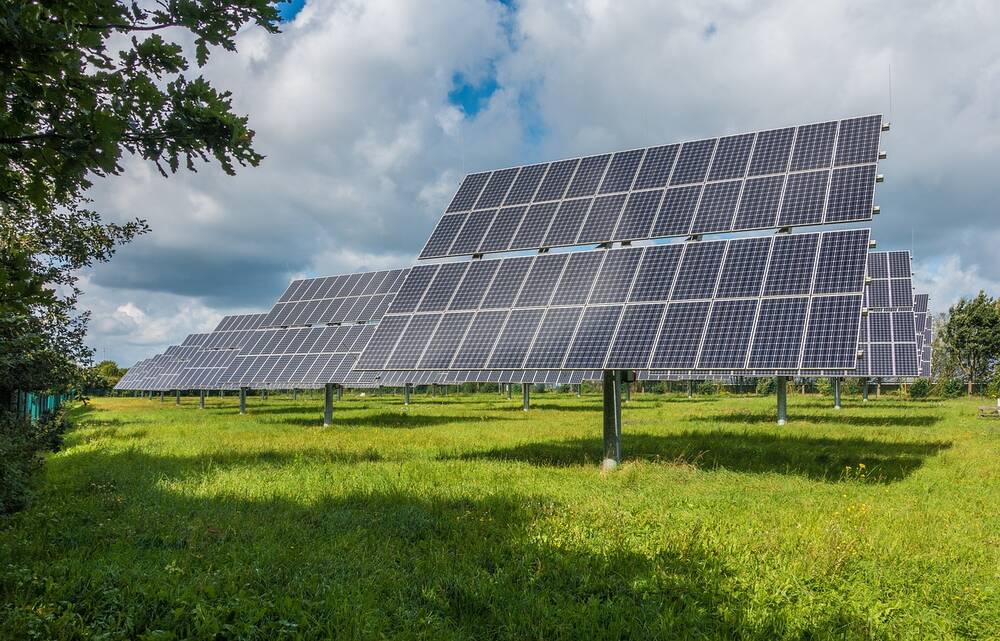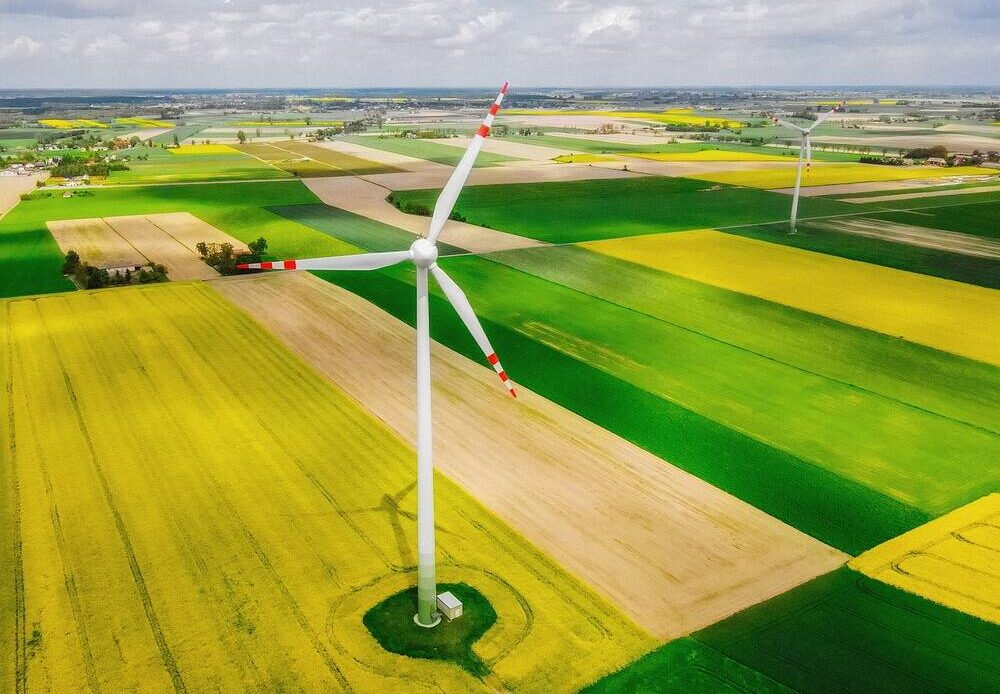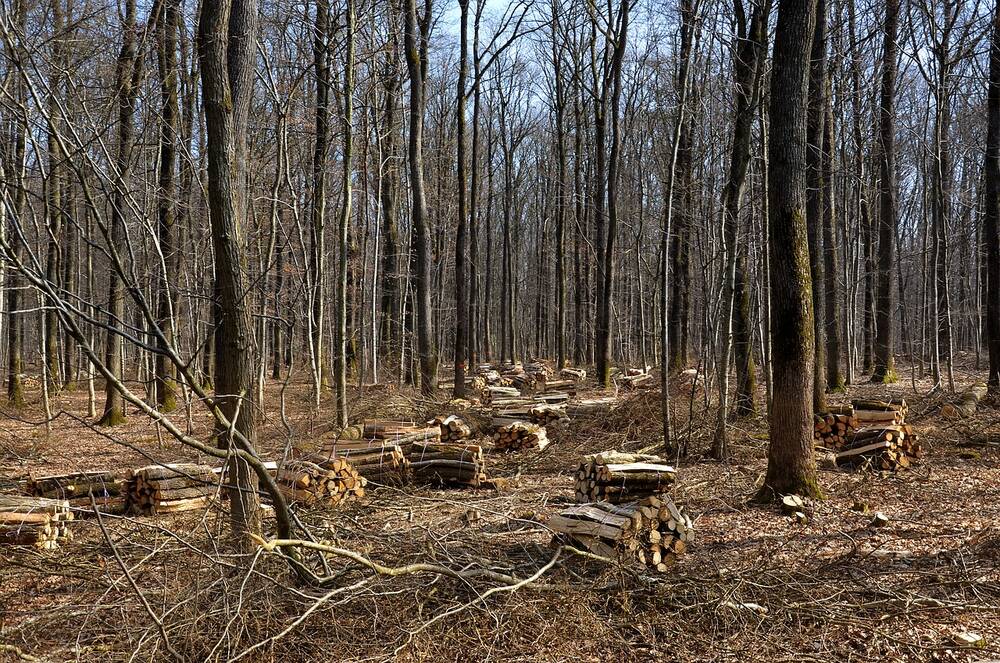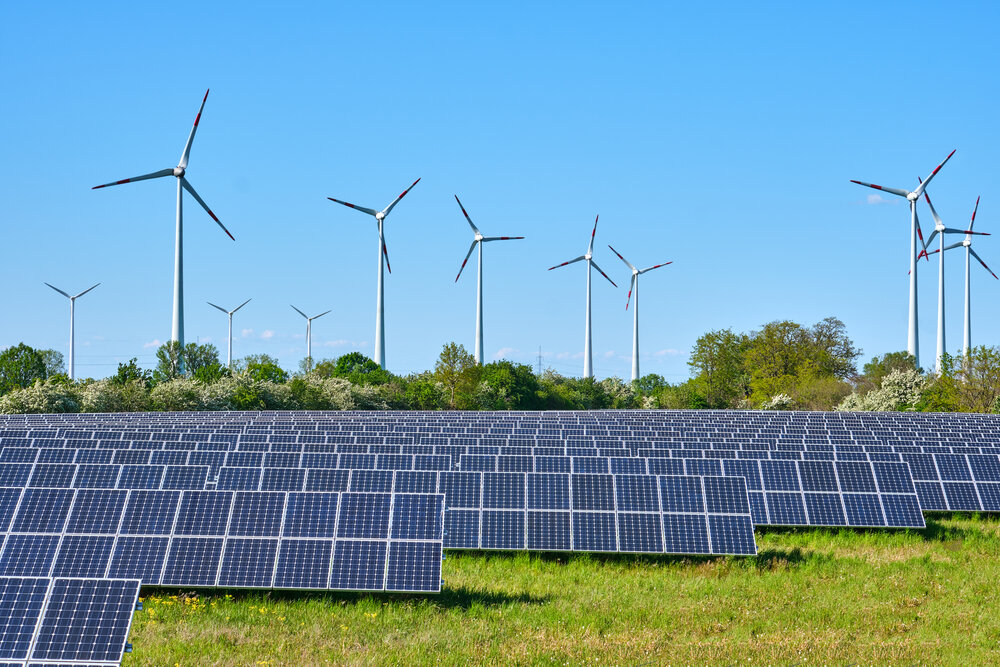Reducing greenhouse gas emissions from electricity generation is essential to combat climate change.
Transitioning to renewable energy sources like wind, solar, and hydropower helps create lower-carbon systems for powering homes, businesses, and heating.
Our latest report provides a comprehensive overview of low-carbon energy sources from algae-based fuels to energy from tidal waves.
We delve into what low-carbon means, why it’s essential, and recent developments in the most successful sources threatening fossil fuels and shaping the future of energy. We explore each source’s direct and lifecycle carbon footprint for a fuller picture of how it performs in a cradle-to-grave view.
What is Low-Carbon Energy?
Low-carbon energy sources are those emitting low or no amounts of CO₂, making them significantly better for the environment long-term. They challenge traditional energy sources like coal, oil, and natural gas finite resources that cloak the planet’s atmosphere and devastate global biodiversity.
Low-carbon alternatives have been on the rise since the late 20th century and have come a long way from experimental prototypes to highly efficient, commercially viable solutions.
Hydropower is historically the biggest source of low-carbon electricity, with nuclear power a strong competitor from the 1950s.
Today, there are many more variations of low-carbon energy sources that direct us away from destroying the environment, and now is the time for their development, widespread adoption, and accelerated integration.
What Makes an Energy Source “Low-Carbon”?
Low-carbon energy sources provide very little or no carbon dioxide when in use.
Sources like nuclear, wind, and solar are low-carbon as once built and installed, they only use natural processes to run with minimal maintenance or fuel requirements, compared to fossil fuels’ constant extraction and burning.
The Importance of Low-Carbon Energy Sources
Low-carbon energy sources create sustainable solutions to replace emission-heavy fossil fuel-based systems. Technology has advanced so that low-carbon alternatives are not only the obvious planet-smart option, but are becoming more cost-effective, practical, and even scalable.
Even if upfront costs can be high, low-carbon sources will most often have lower costs in the long run, making them an economically viable option.
With less reliance on nuclear plants pouring radioactive waste into the atmosphere, and more reliance on low-carbon sources such as wind and solar, air quality improves.
The green transition in the UK alone has created upwards of 400,000 jobs. These are stable, crucial careers that allow individuals to pursue sustainable industries and organisations to expand their renewable sectors.
The low-carbon transition is mitigating climate change by reducing emissions and shifting energy production away from fossil fuels.
Lifecycle Emissions vs. Direct Emissions
Direct emissions occur immediately at the point of energy generation, such as emissions emitted from fossil fuels during combustion, or CO₂ from coal during power generation.
Lifecycle emissions refer to emissions released at all stages of something’s lifecycle, such as a solar panel’s initial resource extraction, manufacturing, transportation, installation, and end-of-life disposal.
A high lifecycle carbon footprint means many more emissions are emitted compared to a low lifecycle carbon footprint.
Low-Carbon Energy Sources
Solar Power

Solar panels have been feared in public perception for decades due to their cost, installation fees, and low efficiency. As tech has advanced, they have become much more accessible and into the mainstream.
They work by converting sunlight directly into electricity using photovoltaic (PV) cells, and are becoming increasingly popular with the rise of subscription services such as solar leasing and Power Purchase Agreements (PPAs).
Beyond their inability to run out, they boast low operating costs at around £0.01–£0.05 per kWh for 1 panel after a week in the UK, and maintenance costs averaging around £100–200 annually.
A main challenge is their weather dependency; they don’t need full sun, but do work better with it. This makes them favourable in areas like southern Europe and California.
Solar panels have no direct Carbon Footprint (CF), with no emissions generated when working. Their lifecycle CF is very low, with an average carbon payback time of 1–4 years, while they last 25–30 years.
Wind Energy

The UK is one of the global leaders of offshore wind power, with 44 wind farms and over 2,500 turbines in total.
The turbines harness the wind’s kinetic energy into a generator, making electricity, as the wind makes the blades spin, turning the rod connected to the generator.
Solar power is typically employed at a residential scale, whereas wind power tends to fall under commercial projects requiring large-scale energy production. Many private companies own turbines or wind farms and then sell and distribute them to consumers.
With no emissions let off when operating, turbines can provide decades of clean energy with a carbon payback time of only 6 months to a year.
Once built, turbines are incredibly cost-effective, as they rely on the wind instead of using masses of fuel or water. They are ideal in coastal windy regions like Scotland or the North Sea, and less effective in lowland inland towns or urban centres.
Other challenges include noise, noticeable in quieter areas, wildlife concerns (e.g. birds), and costly offshore maintenance.
Nuclear Energy
Nuclear energy occurs when atoms undergo nuclear fission. Operators take a fuel such as uranium and carefully initiate a controlled chain reaction by bombarding atoms with neutrons.
This reaction produces heat, which creates steam to drive turbines, ultimately generating electricity.
It’s being used more and more as technology develops, with countries like France generating up to 70% of their electricity from nuclear energy. This mostly happens in large-scale nuclear power plants and provides jobs across construction, engineering, operations, and waste management.
Also boasting low operational emissions, this energy source isn’t weather-dependent, offering a stable source.
Careers in nuclear energy reward highly skilled individuals with talents in engineering and physics, and offer long-term jobs such as reactor operators, safety inspectors, and waste management specialists.
On the flip side, nuclear energy can come with public safety concerns (i.e. Chernobyl), hefty initial costs, and dangerous radioactive waste that can cause long-term environmental and health risks if mishandled.
Hydroelectric Power
Hydropower is when electricity is generated using water, such as river systems and dams. The currents of the water turn turbines linked to generators, hence the water’s kinetic energy turns into mechanical energy.
They are predominantly used in Scotland, as its high rainfall, rugged terrain create an ideal condition for dam creation and water storage.
Some challenges are the ecological impact on marine life, by disrupting the water temperature, flow and transport of sediment, risking water pollution. These human-made dams at a large scale could be a hundred metres high, such as the Hoover Dam in the US, Nevada, but in the UK tend to be smaller-scale river projects.
An effective method, it’s also effective at wiping out entire forests. Some of these dams are as big as entire towns, and upon releasing the water, vast areas of forest are permanently flooded and lost.
These large-scale hydropower projects displace entire communities, and immediately kill masses of animals terrestrial sloths, birds, insects, and entire aquatic ecosystems.
While the electricity benefits are often highlighted, the ecological devastation is rarely acknowledged. These projects release vast volumes of water, sometimes the size of towns, within minutes.
Its direct carbon footprint is near zero, but its lifecycle carbon footprint can vary from very low in the Scottish Highlands then significantly higher in tropical regions due to the sheer amount of concrete and land used in construction.
Geothermal Energy
Geothermal energy is heat from the Earth, so countries with boundaries of tectonic plates like New Zealand or Iceland are optimal, however, the energy can be produced across the UK.
This happens in landscapes with granite rocks retaining heat that can be drilled into deeply for extraction, like parts of the Lake District, Scotland, and Cornwall.
Baseload energy is abundant, making it a reliable source. Compared to wind and solar, geothermal energy takes up much less space, meaning fewer habitats are impacted or disrupted.
The only emissions released during energy generation are trace gases and steam, meaning it has a near-zero direct carbon footprint. Its lifecycle CF is low overall, however varies depending on local geology, like crust thickness and heat flow, determining required drilling depths.
Tidal and Wave Energy
Tidal energy was discovered in the late 19th century and has since been harnessed to generate predictable renewable electricity. It’s used in coastal regions for steady, reliable power. In recent years, its efficiency and affordability have significantly improved.
It works by capturing the movement of the tide using underwater turbines placed in tidal currents or barrages. The moving water spins the turbines to produce electricity, then used to power homes, businesses, and even whole communities.
Wave energy works similarly, but a key difference is it captures energy from wind-driven surface waves, making it less predictable than tidal energy.
This is a reliable source, with predictable lunar cycles and stable baseload in coastal areas. As they’re mostly underwater, there’s very little visual or audible disturbance, especially compared to wind turbine farms.
Due to this, however, they can impact fish migration routes, sediment flows, and other aspects of marine life. In the same vein, a harsh marine environment like a storm-prone coastline can disrupt the equipment, sometimes causing corrosion, damage, or expensive repairs.
Financially, tidal and wave energy systems need large upfront costs and are less commercially advanced than mainstream low-carbon energies.
Biomass

Biomass is when organic materials (like wood, crops, food waste, and animal manure) are processed, fermented, chemically converted, or, most commonly, burned for energy.
This can create biodiesel or bioethanol, then used to fuel buses, heat homes, and generate electricity, saving waste from landfill where they would have decomposed and released methane.
In rural and agricultural areas, it’s more common to sustainably source the materials. This makes the process carbon neutral and contributes towards a low lifecycle carbon footprint.
In contrast, urban or industrial-scale areas might import biomass or use deforestation, making them emission-heavy. This, in combination with imported wood pellets, heavy machinery, and monocultures, leads to a high life cycle carbon footprint.
Biomass energy is used by some power stations to move away from fossil fuels, is increasingly used in the transport sector, and some farmers even produce it themselves using anaerobic digesters.
Burning the biomass does release CO₂, meaning its direct carbon footprint is not zero. In greener setups, the same amount of plants should be regrown so that the CO₂ is eventually reabsorbed.
Green Hydrogen
Green hydrogen works by sending renewable electricity into an electrolyser, splitting water into hydrogen and oxygen; the hydrogen gets stored in tanks, then later used by a fuel cell to create clean electricity.
The process dates back to the 19th century and has seen recent developments, including significant cost reductions, large-scale electrolyser advancements, and further technologies.
China is the largest producer of green hydrogen, with Saudi Arabia currently working on the world’s largest green hydrogen project (part of NEOM).
Green hydrogen can not only store surplus renewable energy in gas form, but also store it on a long-term basis due to its stability in pressurised tanks. It provides an emission-free fuel for power, industry, and vehicles, in place of petrol, diesel, and natural gas.
Unfortunately, they hold a very high cost, and are less efficient than other methods. Energy is also lost at all conversion stages, and significant scaling would require massive renewable electricity capacity.
Waste-to-Energy
Waste-to-Energy (WtE) is similar to biomass, but burns non-recyclable waste instead of organic matter. Think plastics, textiles, and food scraps, materials that would otherwise be buried in landfills for hundreds of years.
Most commonly,y these are taken from households or industries and incinerated in specialised plants to create steam, turn turbines, and make electricity.
Sweden has imported waste from other European countries since 2010 to fuel their 34 WtE plants.
This is highly convenient for urban areas with limited landfill space. It handles constant streams of waste, giving them a second purpose instead of being wasted.
That being said, some processes generate toxic ash or sludge that has to be disposed of carefully. It’s expensive and can lead to air pollution without the correct filtration equipment.
Certainly cleaner than landfill methane, but WtE still emits CO₂ and pollutants like dioxins when plastic and other waste are burned.
WtE’s lifecycle carbon footprint also varies with fossil-derived waste like plastic is higher, but biogenic waste like paper and food is lower.
Carbon Capture with Natural Gas
In this method, natural gas is burned for energy. The crucial element is that the CO₂ is captured before its release. Carbon Capture (CC) is an emerging sector of climate tech that prevents carbon from damaging the environment.
Some CC methods are highly successful, such as post-combustion capture, with capture rates of around 90%, whereas some are emerging technologies that are still in pilot phases or not yet cost-effective.
It works by installing industrial-scale equipment to capture the CO₂ and compress it into a transparent liquid. It can then be injected into geological formations such as depleted oil and gas fields or saline aquifers.
While the process is promising, it needs continuous maintenance, energy input, and monitoring, requiring jobs such as carbon capture technicians or plant operators.
Its direct carbon footprint is mostly captured, but its lifecycle footprint fares high. Compared to solar or wind, the process’s many risks of leakage and high energy demands make it unsustainable.
Emerging and Experimental Technologies
Algae-based Biofuels
Algae are a simple, non-flowering aquatic plant from which algae-based biofuels are made.
This works by growing algae in special ponds or bioreactors and using measured amounts of carbon dioxide and sunlight. This causes a photosynthetic reaction, making sugars and oils from the algae. The oils and sugars are converted into biodiesel, ethanol, or other fuels for a wide range of uses.
Research began in the 1970s, with focused efforts into development later starting in the early 2000s. Today, it’s nowhere near widely used, however, ongoing research harnesses developing technologies to bring the source into commercial viability.
As algae absorb CO₂, some emissions are offset, making their direct lifecycle footprint relatively low. Their lifecycle involves production and processing, but is still on the lower side.
Enhanced Geothermal Systems
EGS (Enhanced Geothermal Systems) tap into the Earth’s heat through artificial reservoirs created by hydraulic fracturing that injects water into the hot, dry rock.
They pump water into the rock formations, heated by the proximity to the Earth’s core. For reference, the deepest a machine has ever reached into the Earth is around 12km, about 0.2% of the way to the core. The deepest EGS is 6.4km deep, boasting 100°C in Espoo, Finland.
Enhanced geothermal systems’ direct carbon footprint is very low, utilising the Earth’s natural heat. After the initial emissions from construction, only occasional maintenance emits emissions, making it a low lifecycle footprint.
Artificial Photosynthesis
Artificial photosynthesis replicates photosynthesis with plants, sunlight, water, and CO₂. This produces energy or chemical fuels like hydrogen, used for energy production.
Significant advancements have been made in its development in recent decades, such as improved catalysts and better energy conversion rates, though not yet widely used. Ongoing pilot phases are steering it closer towards being a reliable energy source.
It’s sustainable, carbon-neutral, and produces clean energy, making it a solid future option for renewable energy. Systems are not yet efficient, and pilots struggle with scalability issues. Costs are high, but should lower as technology advances and production scales up.
Its lifecycle CF is very low, following the initial setup, and its direct footprint emits emissions from equipment production and setup.
More Information
https://ukerc.ac.uk/publications/946f339f-9052-450e-920eec6dacbd22dc
https://www.nationalgrid.com/stories/energy-explained/hydrogen-colour-spectrum
https://www.gevernova.com/gas-power/future-of-energy/carbon-capture-storage
https://www.theguardian.com/environment/2023/mar/17/big-oil-algae-biofuel-funding-cut-exxonmobil

